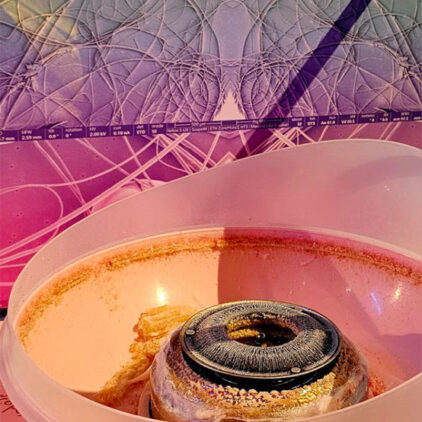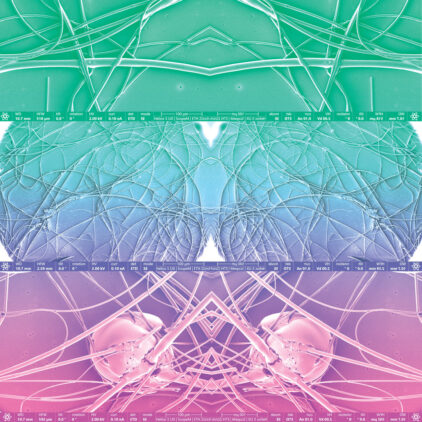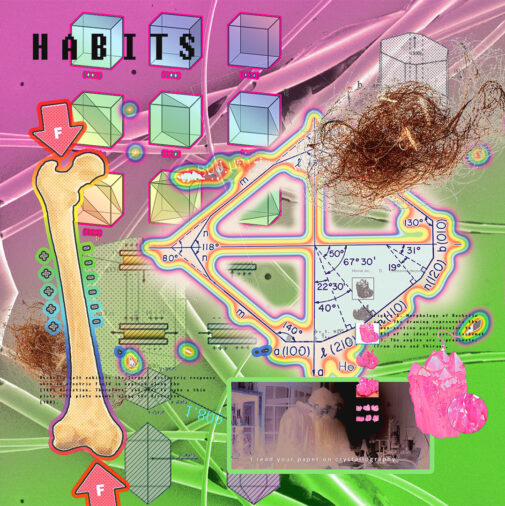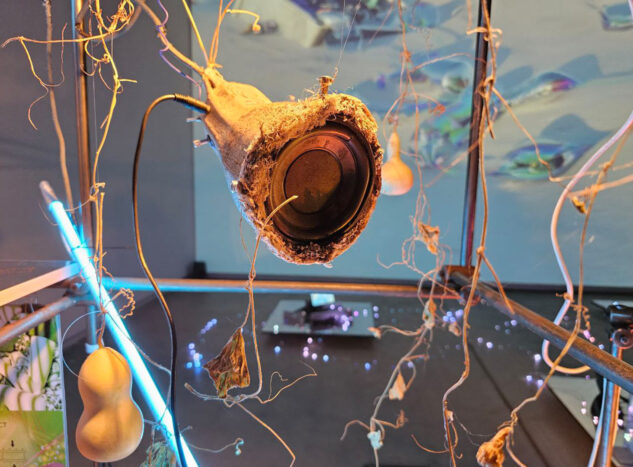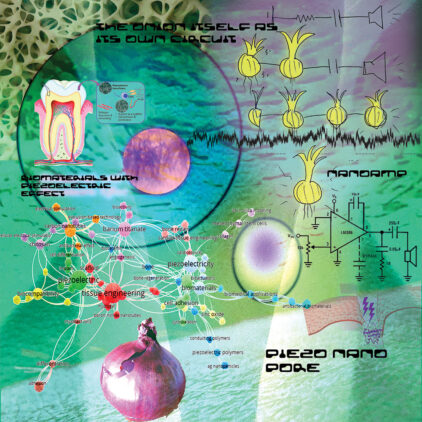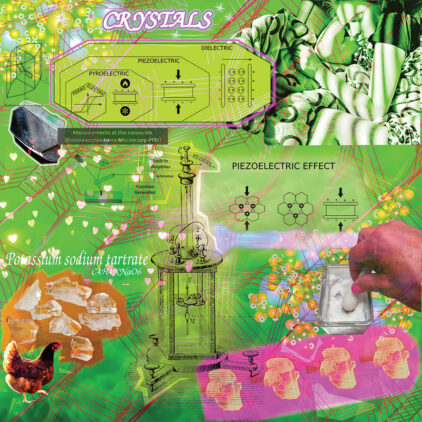Miranda Moss and Urs Gaudenz at REFRESH festival, masterclass and exhibition of ongoing research, 2023. More documentation at https://www.hackteria.org/wiki/EnergyCrystals
“Investigating the field of Energy Harvesting from an holistic perspective, they will unfurl their practice of kitsch kitchen bioelectrochemistry, which aims to agitate knowledge hierarchies and shift collective energy imaginaries. In this masterclass, we will explore hands-on, tastebuds-in experiments together, and see how it feels to situate ourselves as Energy Custodians, tending to the diverse and intertwingled forces we live amongst, while investigating the possibilities of alternate electro-futures based on compassion, tenderness and care, instead of extraction and exploitation. Also, it will be delicious.”
The Festival, curated by Maike Thies, describes itself as addressing “pressing issues at the intersection of the arts, design and technology in keynotes, masterclasses and a multi-layered exhibition. International designers, artists and researchers will provide insights into their work and discuss it with the interested public. The critical topics of this year’s edition are «Immersive Journalism», «Design Realities», «Future Technologies», «Worldbuilding», and «New Ecologies».”
Are Friends Piezoelectric? This is a question we have asked (sung to) ourselves when we realised how many materials exhibit piezoelectric properties, including bones, teeth, hair, onion skins, DNA, cane sugar, egg shell membranes, phages, and various crystals including quartz. So, diving into this topic, we’ve been doing a lot of material exploration, largely with common and accessible materials from the kitchen, the trash, second hand stores,and New Age health shops.
We know piezos from many consumer electronics, where they are used as ‘clocks’ (think quartz watch) as they oscillate at a particular frequency which can be used to keep time in an electronic circuit. They are also used as buzzers or speakers, and are ubiquitous in anything that bleeps or bloops (think smoke alarms, old telephones, doorbells…). Here, you would apply an electric signal, and the piezo will virbrate at the desired frequency, which we hear as sound. You can do the opposite too, where, if you “mechanically deform” i.e. vibrate, wiggle, or put pressure on the piezo (from the Greek “squeeze” or “push”), it will produce an electric voltage.
As such, Piezos are ripe for being used as generators for energy harvesting applications – a fresh field of electrical engineering where small amounts of ambient energy can be collected from the environment.
These voltages behave quite queerly compared to the electricity we usually encounter in our everyday electrical products, and as such are hard to measure with standard devices. Quite a large part of our research has thus been devoted to developing our own measuring tools, especially ones where we can FEEL the power in some kind of embodied way (think sound, tickling an eyelash…).
The fact that materials with these properties are seemingly everywhere, makes us think we could (and should) develop new ways of imagining and relating to electricity, where technoscience should be more holistic and caring, and we can pursue radically harmonious and human-scale energy systems.
